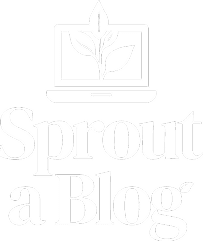Your Simple Step Guide to Navigating Search
SEO insights: Every blogger dreams of their content appearing at the top of a Google search. Whether you’re sharing your thoughts on lifestyle trends or curating expert advice, mastering on-page SEO is your golden ticket to improved blog visibility and, ultimately, blogging success. But with countless SEO guides flooding the internet, how do you figure out what works without derailing your creativity?
We will break down the essential on-page SEO techniques every blogger should know, providing practical steps that can be immediately implemented. From crafting compelling meta titles to leveraging internal links, these actionable steps will give your blog the boost it needs to rank higher, attract readers, and create a memorable user experience. They will also empower you to take control of your blog’s visibility and success.
What is On-Page SEO and Why Is It Crucial for Bloggers?
On-page SEO involves enhancing individual blog pages to improve rankings in search engine results. The goal is to attract more targeted, relevant traffic. Unlike off-page SEO, which focuses on backlinks and promotions, on-page SEO allows you to align your content with search engine algorithms and your audience’s needs.
Why should bloggers care about on-page SEO?
- Better Rankings: It is no secret that optimized pages are more likely to gain better results in search engine rankings. I don’t know about you, but I rarely go to the second page of Google as I take it as a personal responsibility to reword my question to find the answer I seek.
- Improved Reader Experience: On-page SEO isn’t just for algorithms; it ensures your audience finds valuable, well-structured content.
Now that we’ve grasped the importance, let’s review the techniques that will empower you to stand out in the sea of content. Understanding and implementing these on-page SEO techniques will give you the confidence to shape your blog’s visibility and success. You’ll be in the driver’s seat, ensuring sustainable traffic growth and long-term benefits.
1. Keyword Research: The Foundation of On-Page SEO
Keywords are the key to SEO. They connect user intent with your content, making keyword research a critical first step. Here’s how to find the right keywords:
- Analyze Competitors: Review your competitors’ keywords utilizing third-party tools. What words are they ranking for? Then, identify gaps and opportunities in your own strategy.
- Focus on Long-Tail Keywords: Long-tail keywords are longer and more specific keyword phrases. These generally have lower search volume but higher conversion potential. Identify detailed phrases that match niche queries your audience may search to use them effectively. This strategy helps target users further in the buying cycle, improving relevance and attracting qualified traffic. Use keyword research tools to uncover these phrases and incorporate them naturally into your content to enhance optimization efforts. To attract a niche audience, target more specific phrases. For instance, instead of targeting the broad term ‘breakfast recipes,’ you could focus on ‘best vegan breakfast recipes’ or ‘quick and healthy breakfast recipes for busy mornings.’ These longer, more specific keywords can help you stand out in search results.
- Consider Search Intent: Ensure the keywords you select align with what your audience is searching for, whether it’s informational, navigational, or transactional.
Next, Let’s Dive into the Nitty-Gritty Stuff!
- Leverage Analytics: Use tools like Google Analytics to review the keywords that drive traffic to your site and expand upon their success.
- Monitor Trends: Use tools like Google Trends to discover emerging keywords and keep up with seasonal trends or changes in search behavior.
- Use Tools: Platforms like Google Keyword Planner, Ahrefs, or SEMrush make identifying terms with high search volume and moderate competition easy.
- Focus on User Intent: Understanding what your audience is looking for is crucial. Do they want to learn something, make a purchase, or take another action? Craft your content to align with their intent. By improving your SEO, you also provide value to your readers, fostering a stronger connection with your audience.
Pro Tip: Don’t overuse keywords. Aim for natural integration that enhances readability. A density of 1-2% per post works best. Remember, it’s about creating valuable content, not just stuffing it with keywords.
2. Title Tags That Turn Heads
Your blog title is your first impression. A compelling, SEO-optimized title has the power to drive clicks and engagement.
Tips for creating powerful title tags:
- Keep It Short: Stick to 55–60 characters for your title tags to prevent truncation in search results. Doing so ensures that users can read your entire title, making it more likely they’ll click on your page. A concise, clear title also helps search engines better understand your content. Focus on summarizing the essence of your page in this limited space for maximum impact.
- Include Keywords Effectively: Position your primary keyword close to the beginning of your content to enhance its visibility and relevance. When indexing, search engines often prioritize the first few words, so strategically placing your keyword towards the beginning can significantly boost your page’s SEO performance.
- Make It Actionable: Phrases like “7 Steps,” “How To,” and “Essential Tips” can create curiosity and entice users to click on your page. Actionable titles convey a clear benefit or solution, immediately connecting with users searching for specific answers or guidance. This approach improves click-through rates and enhances user experience. By making your title actionable, you demonstrate the value of your page upfront, encouraging higher engagement and establishing trust with your audience.
Example: Before: “SEO Tips To Know” vs. After: “7 On-Page SEO Techniques Every Blogger Must Know”
Quick Tip: Avoid “clickbait-y” titles. Aim for honesty and value to maintain reader trust.
3. Header Tags That Structure Your Content
Think of header tags (H1-H6) as the skeleton of your blog. They help organize content, enhance readability, and signal importance to search engines.
Best practices for using header tags:
- H1 for the Title: Each page should have only one H1 tag.
- Subheadings H2-H6: Use H2 for main sections and H3-H6 for subtopics.
- Keywords in Headers: Sprinkle keywords in headers naturally while focusing on the user.
Well-structured headings make your content skimmable, boosting engagement.
4. Mastering the Art of Meta Descriptions
Your meta description may not directly impact rankings, but it significantly influences click-through rates (CTR). A well-crafted description is your elevator pitch to potential readers.
Writing an effective meta description:
- Keep It Brief: Use 150–160 characters.
- Include a Call-to-Action: Example, “Discover 5 SEO tips to grow your blog today!”
- Use the Target Keyword: This reassures users that your content matches their search intent.
Example: Before: “Learn about SEO.” vs. After: “Maximize traffic with these seven on-page SEO techniques every blogger can use today!”
5. Image Optimization for SEO
If chosen properly, images can add visual appeal and contribute to the quality of your blog. However, we learned the hard way by not properly optimizing our images prior to uploading them to our WordPress website, as they negatively impacted our load speed.
Steps to optimize images:
- Use Descriptive File Names: Rename “IMG1234.jpg” to “vegan-breakfast-recipes.jpg.”
- Add Alt Text: Describe the image for visually impaired users and improve search engine understanding.
- Compress Images: Use tools like TinyPNG or ImageOptim to reduce file size without losing quality.
Pro Tip: Use original images whenever possible. They resonate more with audiences and avoid copyright issues.
6. Internal Linking for Better Navigation
Connecting your blog posts through internal links improves both user experience and SEO. It allows search engines to crawl your pages more effectively.
How to use internal links for SEO:
- Use Relevant Anchor Text: Instead of “click here,” use descriptive terms like “learn about SEO techniques.”
- Link Deeply: Avoid linking to your homepage repeatedly; direct users to valuable inner pages.
Image optimization is crucial in keeping readers engaged on your website by enhancing visual appeal and page performance. Properly optimized images ensure faster loading times, which reduces bounce rates and creates a smoother user experience. High-quality, well-placed visuals can complement your content, making it more engaging and easier to comprehend. Therefore, by using descriptive alt text, appropriate file formats, and responsive image sizes, you improve accessibility and contribute to better SEO rankings, driving more traffic while retaining your audience’s attention for extended periods.
High-quality visuals matter. Why? They enhance your content, make it more appealing, and make the content easier to understand while improving accessibility and SEO rankings.
7. Clean and SEO-Friendly URL Structures
Long, convoluted URLs can hurt rankings and confuse readers.
The ideal URL structure:
- Keep It Short: Aim for under 60 characters.
- Include Keywords: Reflect on the blog topic.
- Avoid Special Characters: Stick to letters, numbers, and hyphens.
Example: Before: “www.blog.com/p=12345” vs. After: “www.blog.com/on-page-SEO-techniques”
8. Quality Content is King
Valuable, original content is at the core of every great blog. SEO optimization becomes meaningless without a solid foundation.
Elements of high-quality content:
- Unique Insights offers perspectives or data readers won’t find elsewhere.
- Solve Problems by using a FAQ Page to help answer questions from your readers.
- Engaging and Clear writing keeps readers hooked.
Consistently producing content that educates, entertains, or inspires fosters trust and loyalty.
9. Mobile-Friendliness Matters More Than Ever
Looking at our own and our clients’ analytics, we find that more than half of our visitor traffic comes from mobile. This statement has been around forever, but it is more true today than ever. If your blog isn’t mobile-friendly, you’re losing a significant audience.
How to ensure mobile responsiveness:
- Responsive Themes: Choose a blog theme that’s mobile-optimized.
- Test User Experience (UX): Use Google’s Mobile-Friendly Test.
- Font Size & Layout: Cater to small screens.
10. Lightning-Fast Site Speed
Slow websites frustrate users and harm your rankings. In addition, speed matters when Google assesses Core Web Vitals.
How to optimize site speed:
- Compress Images and minimize code.
- Enable Caching and use a CDN (Content Delivery Network).
- Monitor performance regularly with tools like Google PageSpeed Insights.
Elevate Your Blog’s SEO Today
A successful blog post does more than sit on a digital shelf. By mastering these on-page SEO techniques, you set the stage for long-term success, ensuring that your content finds, attracts, and resonates with the right audience.
In closing, remember, SEO is an ongoing process. Therefore, implement these tips consistently, stay updated on SEO trends, and watch your blog thrive.
For more actionable blogging tips, follow us on our social channels or subscribe to our newsletter.



